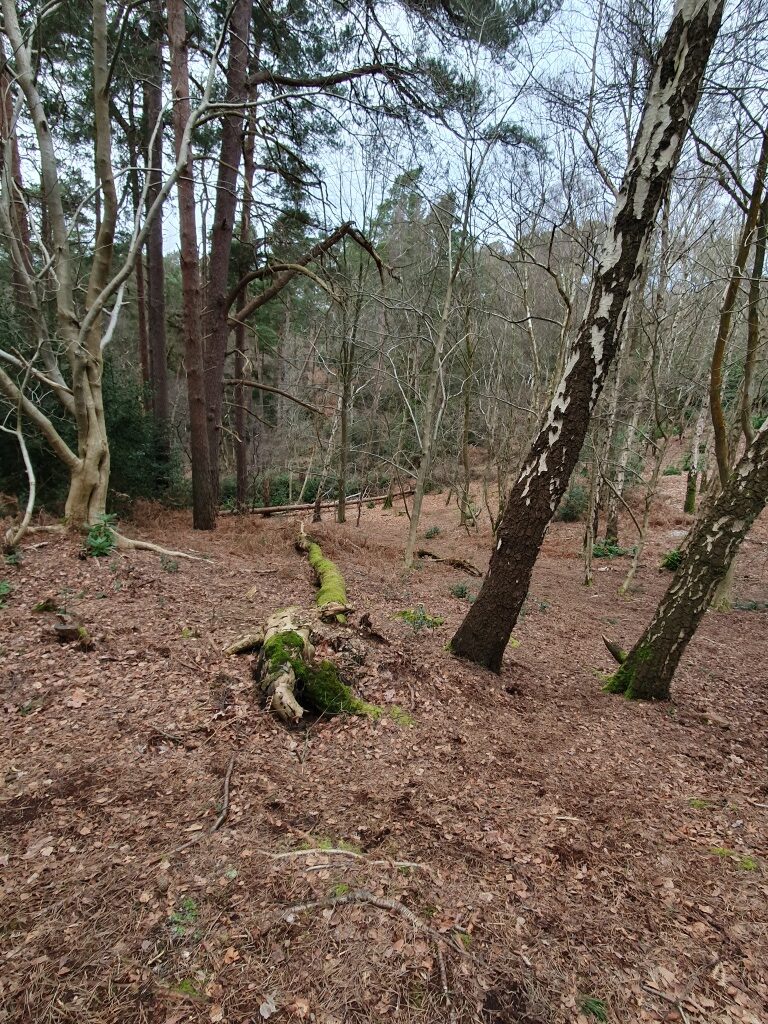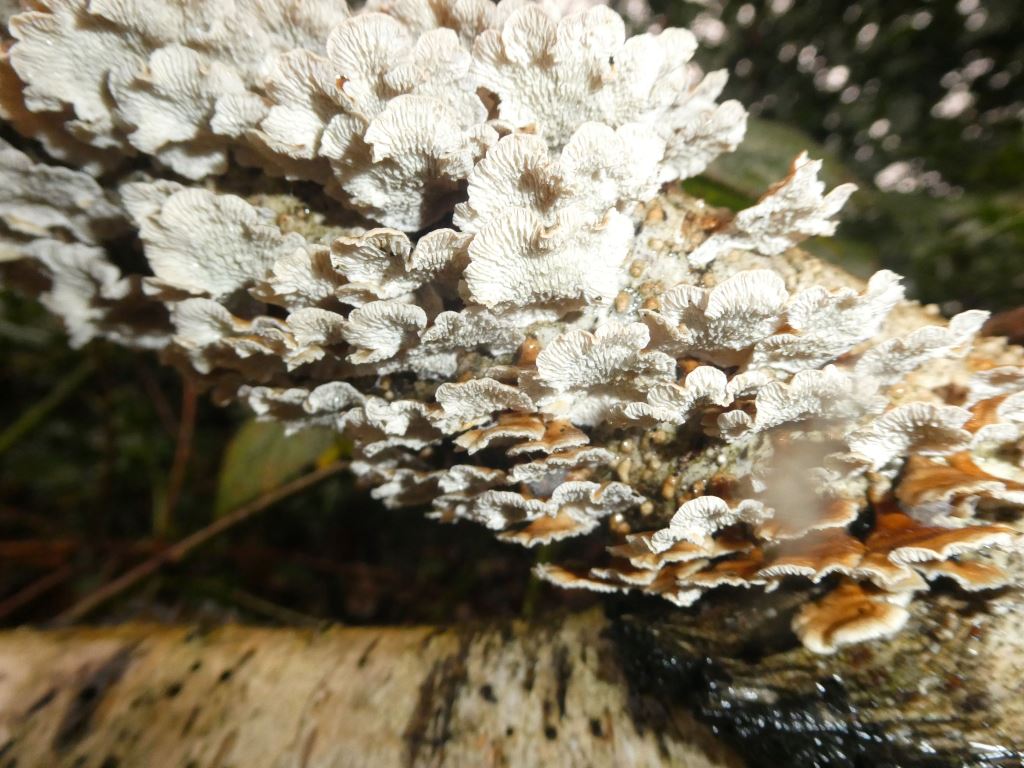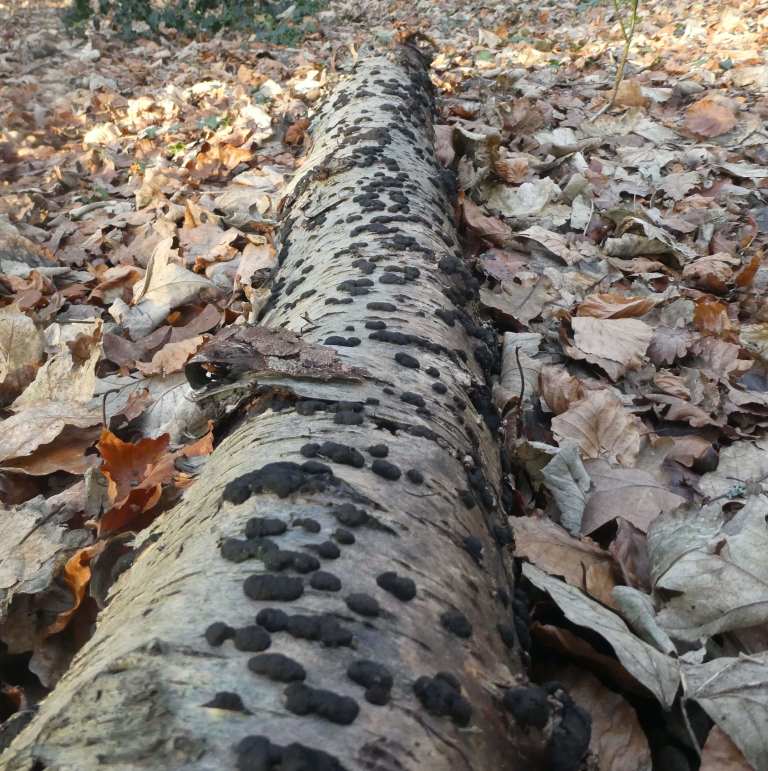Lesley Dunlop led a walk to look at the geology of Finchampstead Ridges on the morning of Saturday 3 February. The weather was cloudy but not particularly cold. The drumming of a woodpecker was heard as members gathered in the car park of the National Trust’s Simon’s Wood. Lesley explained that the bedrock below the car park was the Camberley Sands (and Clays), laid down about 44 million years ago in estuarine conditions. These are part of the Bracklesham Group. The surface deposits of the plateau at the top of the site are Sands and Gravels, laid down in the Anglian period of glaciation about 500,000 years ago. More recent Gravel deposits lower down at Moor Green lakes include flints, but also material such as Greensands from the Weald. The surface deposits of Sands and Gravels at the top of the site have been extensively worked in the past. The 1910 Ordnance Survey map shows a number of Gravel and Sand pits. The walk started out northwards towards Heath Pond, leaving the Gravel deposits at the top and moving onto first the Camberley Sands and then the Sands of the Windlesham Formation, which is also part of the Bracklesham Group. Drainage water from the high ground here which has passed through the iron-rich Sands emerges lower down at the boundary with impermeable London Clay at places such as California Country Park and Rooks Nest Nature Reserve. These sites have characteristic orange streams with a high iron content and special bacteria which thrive in an iron-rich environment. Back at Simon’s Wood, the track was dry underfoot as it passed over the Sand formations. The group walked down to the edge of an open area with Heather which stretches across to Heath Pond, then turned left along a wide sandy path with banks on either side. A brief wet section of path marked out a Clay layer. A small stream emerged on the left, crossed the path and then drained into the open area leading towards Heath Pond. Further on, deposits of orange sand in the bank at the side of the path were inspected closely. A fallen Birch trunk had the hard, black, warty, cushion-like growths of the Birch Woodwart. The track then ran along the back of the gardens of a number of houses. To the right of the track, the National Trust had cleared quite a large area of rhododendron. To the left of the track, the back gardens were smothered under a dense canopy of rhododendron. The track led to a lane which had been edged with Granite cobblestones. Lesley, who is an expert on Granite, said that the material had not come from the Cornish, Shap or Aberdeen Granite fields. Instead, it was most likely to have come from Portugal.
The walk then continued across Wellingtonia Avenue into the southern section of the National Trust’s Finchampstead Ridges reserve. There is a narrow flat plateau at the top, then a very steep drop down towards the valley of the Blackwater. Fallen Silver Birch trunks had an interesting collection of fungi, including a Hoof Fungus, a cluster of Crimped Gill fungi and Blushing Brackets. Further on, a bright yellow Common Earthball demonstrated the citrinum part of its Latin name Scleredoma citrinum. A bench at the edge of the top plateau looked out over the precipitous woodland below. At the bottom of the steep hillside, streams emerge from springs on the underlying Clay. Contouring round the edge of the top plateau, the path led to another bench with an even better view, across the Blackwater valley to the Chalk ridge of the Hog’s Back near Guildford. Lesley explained that there is a fold in the underlying geology, caused when Africa collided with Europe. The syncline goes from Finchampstead, across the low-lying Blackwater Valley and up to the Hog’s Back. Gorse was in flower and a Buzzard circled below. A Bitter Oysterling was found on Birch and a line of Hollies marked out a Clay layer. Holly needs a somewhat damp environment and was not seen on any of the dry sandy substrates. The route then turned back towards the start, crossing first an open heathy area, then crossing Wellingtonia Avenue and finally walking through a short stretch of woodland and back to the start. Wellingtonia Avenue is lined on both sides by enormous Giant Redwoods which were originally planted in 1869 as a monument to the first Duke of Wellington.



Pictures by Jim Wills and Jan Haseler
